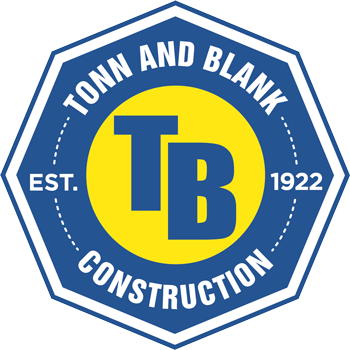An Introduction to Off-Site Construction
When your new construction project doesn’t afford you the luxury of time, you can count on off-site construction to save the day. This game-changing building technology lets you overcome the challenges associated with traditional building methods. It allows us to create permanent structures in record time, in any season. Off-site construction also reduces your reliance on expensive human labor, effectively lowering the overall cost per project.
What is Off-site Construction?
Also known as modular construction, off-site is an innovative method that allows much of the construction process to happen away from the building site. The building materials are manufactured in prefabrication factories and shipped to the construction site for assembly.
Manufacturers fabricate various building components, such as floors, walls, roof trusses, and ceilings, with exacting specifications. They prefabricate the mechanical, electrical, and plumbing (MEP) systems to create fully functional permanent structures.
The innovative approach facilitates faster construction times, making it an efficient alternative to traditional construction methods.
The Basics of Off-site Construction
The off-site construction process comprises four broad phases designed to meet your specific needs while accelerating project delivery.
Design and Engineering
Architects, engineers, and other professionals collaborate to develop a custom building plan for each project. Each modular design comprises various building components for easy transportation and on-site assembly. The design process also accounts for the structural integrity of each module and the overall building. Structural engineers use advanced computer modeling techniques to ensure the models can handle the stress, loads, and forces they’ll endure during transportation and assembly.
Manufacturing
With off-site construction, each modular design component is fabricated in a controlled factory environment. The factory setting eliminates inclement weather and other external factors that could affect product quality and timelines. Automated cutting systems, computer numerical control (CNC) machines, and robotic assembly systems produce components that meet exact specifications. The workflow process allows for vigorous quality control measures at every manufacturing stage.
Transportation
Transporting module components to the construction site requires proper logistical planning to ensure safe and timely delivery. The logistical team uses module sizes, weight, regulatory restrictions, and site distance to create a custom transportation plan. Trucks are ideal for transporting smaller modules over short spaces, while trains and barges are the best option for transporting large, heavy modules over long distances.
Contractors employ top-notch safety measures, including bracing, strapping, and cushioning, to protect the modules from shocks, vibrations, and adverse weather during transit. They also map the transportation route well in advance and procure the necessary road permits for a smooth process.
On-Site Assembly
A site preparation team prepares the construction site before the modules arrive. Site preparation entails clearing the area, leveling the ground, and connecting the utilities for a smooth transition. The team provides lifting equipment, utility connections, or a temporary foundation to facilitate unloading and on-site storage.
Riggers and skilled operators use cranes and other specialized equipment to place building components per the design layout. After a successful placement, the modules are connected and integrated to create a cohesive structure.
Skilled technicians work with the assembly team to install the mechanical, electrical, and plumbing systems and ensure proper alignment and functioning. Standard quality control and assembly inspections ensure high safety standards.
The Benefits of Off-site Construction
Off-site construction offers several benefits over the traditional, on-site construction process, including:
- Speed: Off-site construction can drastically reduce the construction timelines. Since the modules are manufactured concurrently with site preparation, this method is ideal for projects with tight deadlines. Off-site construction can accelerate project delivery by months or even years.
- Quality control: All the building components are manufactured in a controlled factory environment. That ensures meticulous quality control measures and automation that ensure each module is consistent and conforms to the highest quality products.
- Cost savings: Off-site construction can help lower labor costs since the manufacturing process is automated. A quick and efficient assembly process also reduces construction timelines and overhead expenses.
- Sustainability: An off-site construction process is more sustainable because the components are manufactured in a controlled factory environment. The production process reduces waste while facilitating better waste management. An accelerated construction timeline translates to minimal environmental disruption.
- Flexibility: Off-site construction is flexible and adaptable. Due to the modular nature of the building components, you can customize, expand, or reconfigure the structure to fit your evolving needs.
An Off-Site Construction Case Study
The Chicago Heights Urgent Care contracted Tonn and Blank to deliver a winter project comprising 11 exam rooms, 6 restroom pods, and an electrical distribution room. The exterior walls needed aluminum-clad siding to improve aesthetics and functionality.
We recommended an off-site construction because of the tight deadline and prevailing weather conditions. We manufactured the building components in our temperature-controlled 8,500-square-foot facility. That allowed us to overcome inclement weather and deliver the project on time and within budget.
Our cutting-edge manufacturing process allowed for exceptional quality control. Our workflow comprises 3D laser scanning equipment and CNC routers to ensure consistent output. Our quality department inspects every component rolling off our assembly line for quality and specifications.
After fabrication, we safely transported all modules and stored them on-site. Our assembly team assembled the project quickly and efficiently to have the project up and running in record time.
Search the Site
Recent Posts
- Safety Manager Receives Lifesaver Award June 4, 2024
- Championing Workforce Development with a New Pathway May 29, 2024
- FF&E in Construction: The FF&E Process Explained May 23, 2024
- Empowering Tomorrow’s Builders through ACE Mentorship May 7, 2024
- Outstanding Project Safety Award Recipient April 29, 2024
Posts By Category
- Company News (17)
- Project News (32)
- Resources (6)
